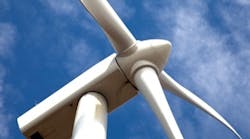A wind turbine is a costly, long-term project that can be compromised if you don’t factor in maintenance. Just like a car needs oil changes or filter replacements, wind turbines also require periodic servicing to retain peak performance. Without regular tune-ups, your investment will be blown away by costly repairs and lost power generation
A Storm of Consequences
If you neglect routine maintenance, you’re setting yourself up for disruptive and expensive problems down the road. Each one chips away at your investment and production levels.
One of the largest issues you can face is gearbox assembly failure. Not only will you have to replace this highly expensive part, you’ll also add crane rental to your bill because a gearbox can weigh in excess of 30 tons. As repair costs escalate, you’re losing electricity production each day the turbine is out of commission.
“For a utility-scale turbine, gearbox replacement and crane rental can cost upwards of $1.5 million,” estimates Harold Prior, executive director of the Iowa Wind Energy Association.
Even if replacing the gearbox on a smaller model costs $100,000, you’re still wasting significant capital on an unnecessary repair that’s largely preventable with proper lubrication.
“Many vendors now offer remote monitoring of the gearbox oil,” says Prior. “They can analyze the oil condition for water, dirt, and metal filings that would indicate early failure of a bearing or gear teeth.”
If a part is in question, it’s better to replace it than wait to see if it becomes an issue, recommends Bruce Graham, chair of the Wind Energy Technology program at Cloud County Community College (KS). As an instructor, Graham oversees four turbines on campus.
“If you inspect a bearing and notice one is rough, immediately replace it to make sure the bearing doesn’t have a failure. If it does, the bearing might tear out of its housing and then you have two parts to replace,” says Graham.
It’s also important to decipher what caused a problem in the first place to prevent it from becoming a reoccurring issue, Graham continues. For example, a shaft alignment problem can cause a bearing to go out. If you don’t make any adjustments to the shaft, the bearing will continue to fail.
Visual inspection of the exterior and interior workings is also a good way to spot trouble. It’s rare for weather damage to occur (most turbines shut down when winds exceed 50 mph), but an accumulation of grime, ice, or frost on the blades can decrease performance.
Keep Maintenance in Check
One of the complications with maintenance is that there is a tremendous variety of turbines on the market, says Prior. With models produced globally, maintenance needs are specific to the individual vendor.
Make sure you receive a maintenance checklist from the manufacturer so you can account for scheduled servicing, recommends Graham. This is particularly crucial because replacement parts like filters and grease are highly specialized and often must be ordered.
Despite mechanical variations, turbine maintenance typically involves:
- Changing oil, belts, bearing lubrication, and air filters
- Testing and realigning shafts and hydraulic components
- Inspecting for oil leaks, cracks, and brake pads
- Torquing tower bolts
Larger turbines have higher annual maintenance costs because their design is more intricate.
“A small turbine that’s 10, 15, or 20 kilowatts will likely cost between $500 and $1,000 in maintenance a year because they don’t have a lot of complicated moving parts,” explains Prior.
Manufacturers often offer a five-year warranty that includes routine maintenance, with extended servicing available for a fee after it expires. If not, you’ll need to contract with a service provider.
These preventive measures are not only cost-effective and easy to schedule, they’ll also greatly extend the life of your turbine and your renewable energy output for years to come.
Jennie Morton ([email protected]) is associate editor of BUILDINGS.


